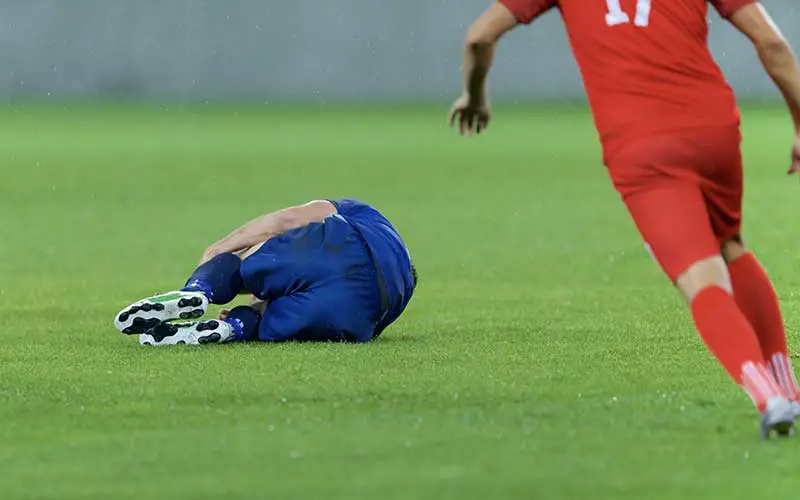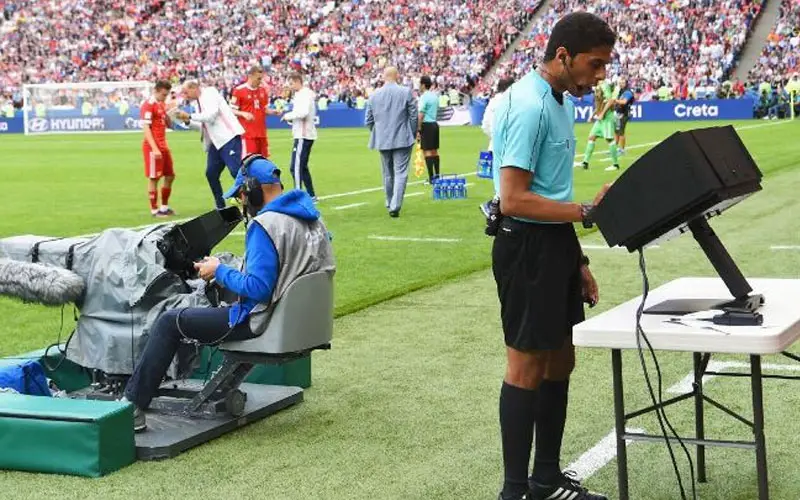Why Do Soccer Players Fake Injuries?
There is no doubting that soccer is a highly physical game. A player from one team will almost always be trying to win the ball from an opponent, because it is usually only by having possession of the ball for a sequence of passes up the pitch that their team can create chances to score a goal.
The rules of the game allow for a certain amount of physical contact between players in trying to win, and keep, the ball for their team. For example, it is perfectly legal for two players to barge each other, shoulder to shoulder as they try to get, and keep, the ball. And a lot of the excitement of the game comes from watching players who are very skillful at tackling their opponents, using a combination of nimble footwork and strength to take the ball from them.
As a result of such close physical contact, it’s inevitable that many tackles will be misjudged, and the player on the receiving end may end up being hurt. In most cases, this happens completely accidentally, but it is also common for one player to deliberately foul another because, in their mind, there is no other way for them to win back possession of the ball for their team.
And because these physical clashes have become integral to the game, in recent times it has also become more common for some very clever players to try to convince the referee and other officials that a tackle is actually worse than it appears, and they have been hurt. However, this is also an offense under the laws of the game, and we describe below why this is the case.

How Common Is It To See A Soccer Player Faking An Injury?
If you watch a game of soccer closely, there’s a fair chance that it won’t be long before you come across an incident where a player who, after a seemingly innocuous contact with a member of the opposition team, collapses to the ground and tries to persuade the referee that they have been badly injured.
But in reality, they might quite possibly not be as badly hurt as they are trying to make it appear – they are simply trying to gain some kind of advantage for their team.
In this article, we will delve into the reasons why a player might feign an injury, and the advantages they might be seeking to gain through doing so.
It has to be stressed at the start that a section of the rules of football titled ‘Unsporting behavior’ lists 12 types of incident which may lead to a player being given a caution, or what’s known in the game as being shown the yellow card. Right at the top of that list is “attempts to deceive the referee e.g. by feigning injury or pretending to have been fouled (simulation)”. A more serious attempt to deceive a referee – one where a player might reasonably be deemed to have tried to directly alter the outcome of a game – can even be punished by the culprit being shown the red card, which means he is sent from the field, and is not allowed to take any further part in the game.
So clearly, faking an injury in an attempt to gain an advantage for your team is something which referees are encouraged to look out for, and to penalize if they feel that it is being done with the aim of earning a player, or their team, any kind of advantage in the game.
When Might A Soccer Player Try To Fake An Injury?
Because players’ conduct on the pitch is constantly watched by the referee, and they can be penalized for a wide variety of reasons, there will always be a few players who might try to trick the referee into awarding a foul, and passing the advantage back to their own team.
Below, we summarise the main circumstances which might lead to a player wanting to engage in simulation, in spite of the risks that they might be penalized for it.
- When they themselves, or their team, lose the ball when they would otherwise have been in a good position to score a goal
If an attacking move is ended by a defender tackling an opponent and winning the ball, then faking an injury might sometimes be used in an attempt to persuade a referee to award a free kick or penalty kick. This will then rob the defending team of a chance to keep possession of the ball and trying to create a goal-scoring chance of their own.
- When a player knows he will not win the ball after being passed it by a team-mate
Quite often, a player will misjudge his kick or header when he is trying to pass the ball to a teammate. So if the player receiving the ball thinks he has no chance of winning it, he might challenge for the ball, but then simulate that he has been fouled by the opposing player who was also trying to win the ball, so that his team is awarded a free-kick and the opposition is denied a chance to mount an attack of their own.
- To try to get an opposition player booked or sent off
This is probably the most controversial reason why some players may engage in simulation of an injury, and is certainly the major reason why ‘simulation’ is expressly forbidden by the rules of the game.
Every player knows that, if in the referee’s view, a foul is serious enough, it can be penalized not just by the awarding of a free kick or penalty, but can also result in the perpetrator being shown a yellow card (booking, equivalent to a final warning) or a red card (sending-off). Of course, this then puts the team penalized at a disadvantage, because their opponents are at increased risk of having to play with one player fewer, or they actually have to do so.
- To attract the referee’s attention
Because a game of soccer moves so quickly, it can be easy for a referee or one of his assistants to miss an incident that should have been called as a foul. You might then sometimes see a player simulate an injury arising from a challenge because he has been aggrieved that this has happened, and to try to win the free-kick or penalty which he or she believes their team deserves.
- To waste time
An injury during a game will usually result in play being stopped temporarily. If this happens, the referee is obliged to stop his watch, and to add the time taken for the injury to be dealt with, and to take any action he feels necessary against the offending player(s), onto the end of the half of the game being played. But the decision as to whether to actually play this time is at the referee’s discretion. As a result, it is quite common for a player in a team with a commanding lead in a game to make an incident involving contact with an opponent appear more serious than it actually is. In taking his time to get back to his feet and carry on playing, he may well have bought his team a vital minute or two in which they do not have to defend.
As you can see, the potential advantages to be won by a player who can convincingly simulate an injury after a tackle mean that many are tempted to take the chance that the referee will be deceived.
However, modern-day supporters are so knowledgeable that they can often detect when a player is engaging in simulation. If this happens, they will usually make their opinions known to the referee, and try to persuade him whether (or not) they believe a player was trying to win an advantage for his team.
What Might A Soccer Player Gain By Trying To Fake An Injury?
Because soccer is a contact sport, which regularly sees players from both sides competing keenly to win and keep possession of the ball as they try to create chances to score a goal, a game regularly involves incidents where two opposing players will come into contact with each other.
This is most likely to happen when one player tries to tackle a member of the opposing team in order to try to win the ball. Tackling with reasonable force is allowed – indeed players are often praised for their ability to ‘go in hard’ on an opponent, without actually causing injury, because it might increase their chances of coming away in possession of the ball. This is all acceptable, provided the player making the challenge does not intend to, or actually does, injure their opponent.
It is precisely because any instance where two players challenge for the ball and one is hurt as a result should lead to a foul being awarded against the player deemed to be the aggressor in the challenge, that at times, players might pretend that they have been hurt when this is not actually the case.
Then, it will be down to the referee to decide whether, in his own opinion, he believed that the player making the challenge intended to hurt his opponent in doing so.
How Can Technology Help To Detect Simulation?
The growing prevalence of acts of simulation in the game was one of the main drivers behind the introduction into the game of video replay technology.
After many years in which high-profile incidents had occurred where it had been found afterwards that the referee had been tricked into penalizing a team due to an act of simulation, the International Football Association Board sanctioned the use of video assistant referees (commonly known as VAR) in 2018. Their main purpose is to correct ‘clear and obvious errors’ made during a game by an official, and to pick up on ‘serious missed incidents’ and give the referee a chance to review them and then penalise the offender(s) as they see fit.
As it is officially prohibited under the rules of the game, simulation is one offence which a VAR can ask a match referee to review and adjudicate on.
None of this, however, is ever likely to completely eliminate incidents of simulation. It is a problem that is (almost) as old as a game, and one that is likely to continue for as long as the potential advantages and rewards to be gained can be so great.

